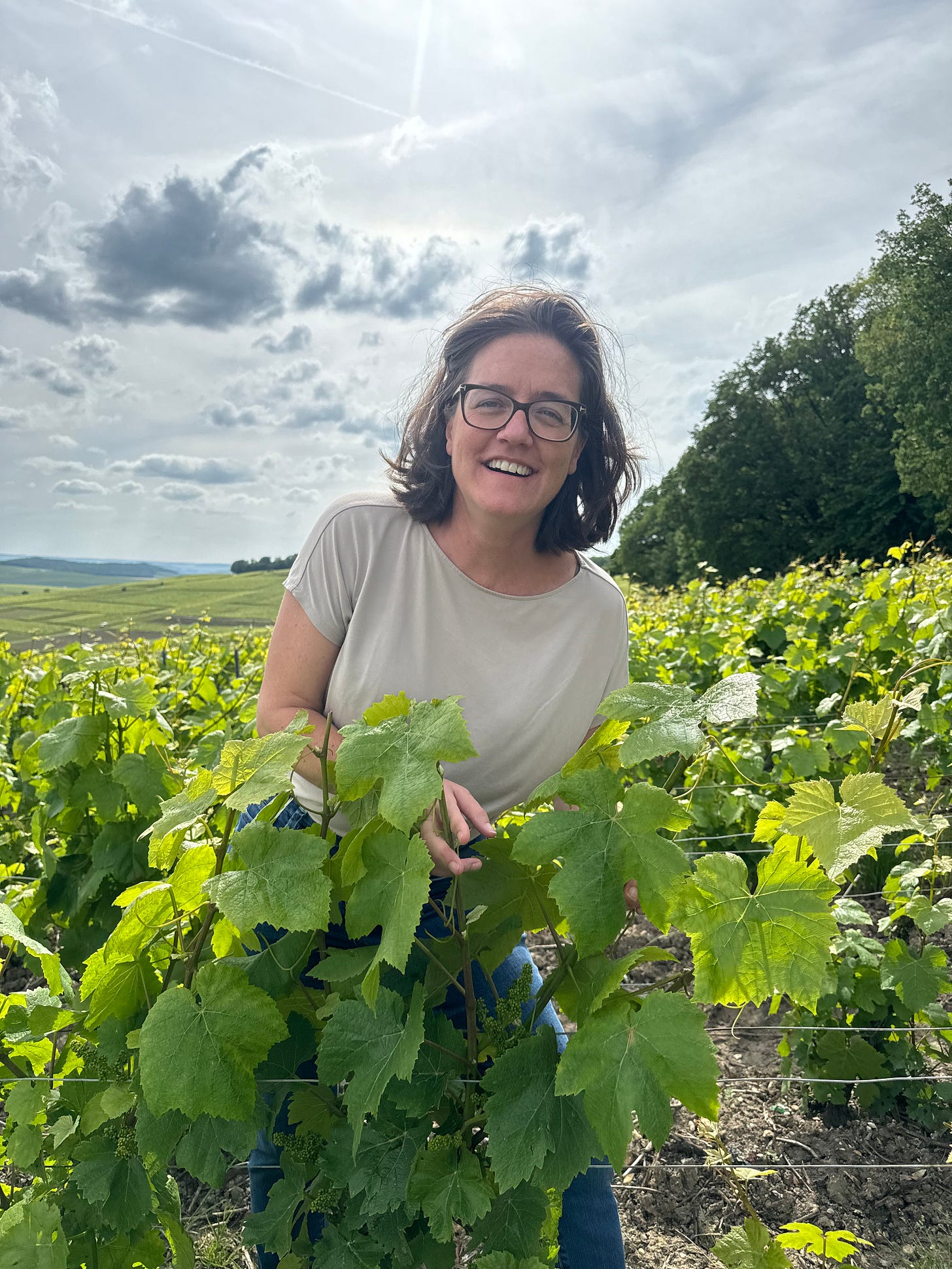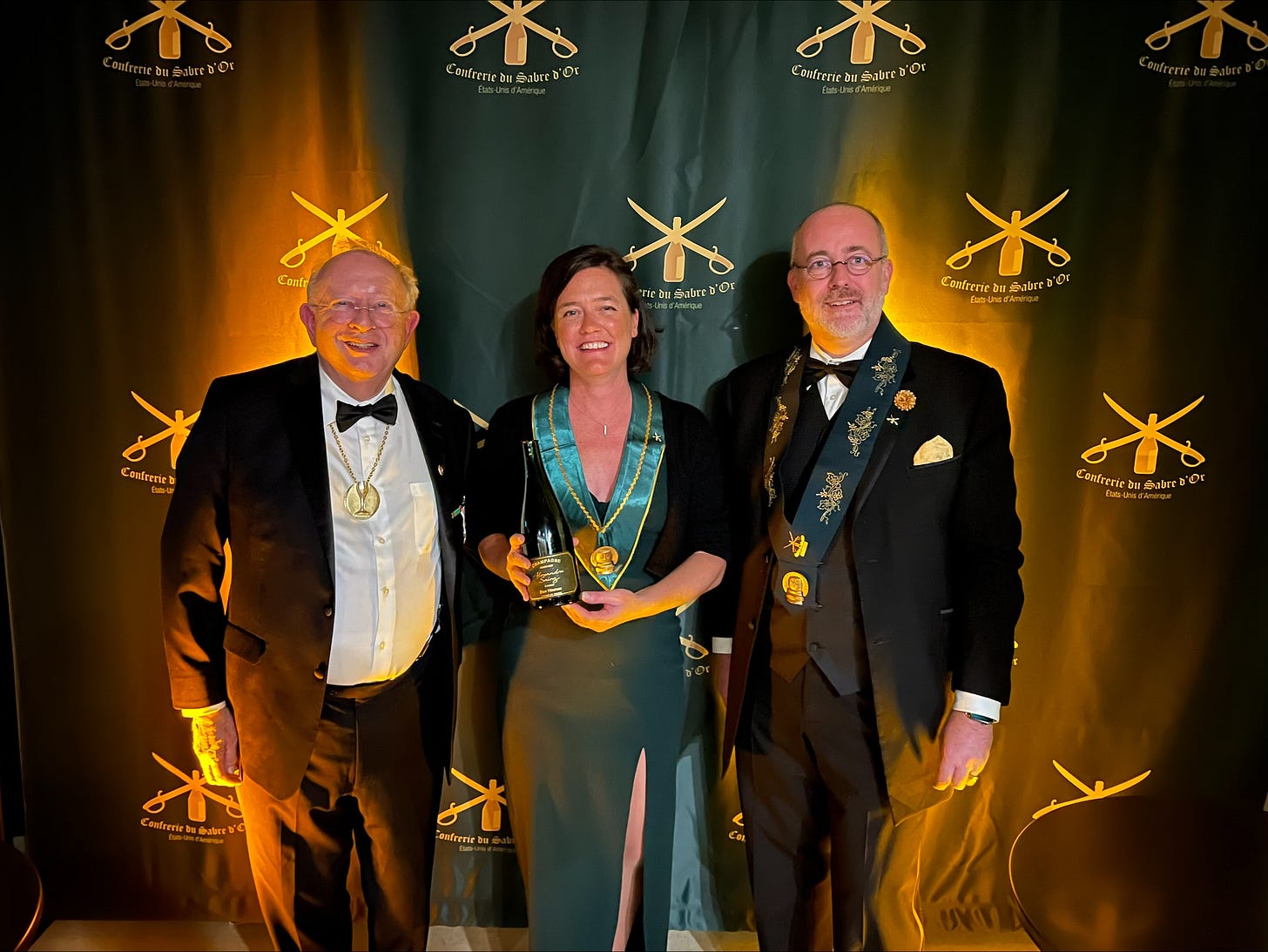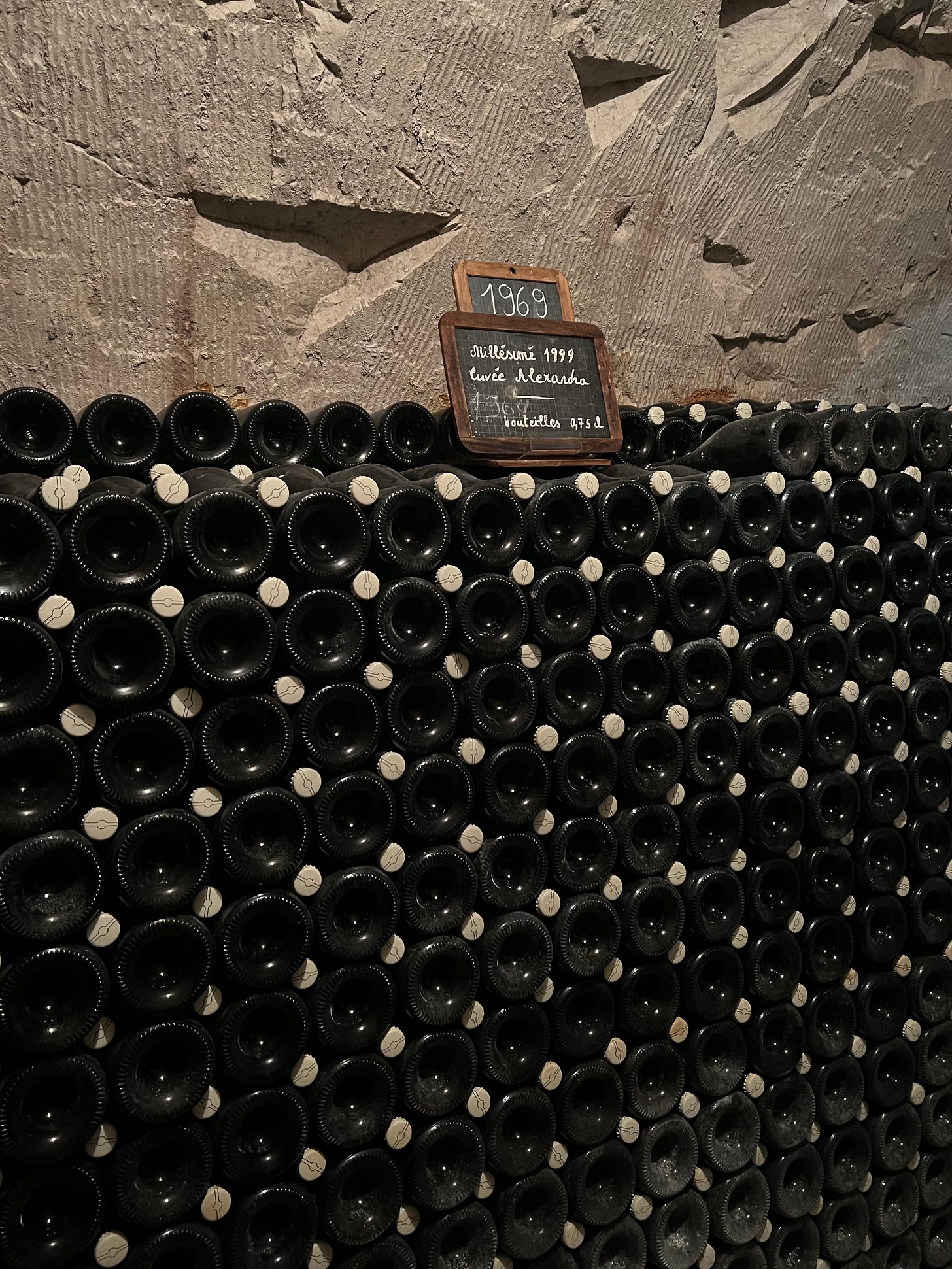Interview Series: Alexandra Sainz
Growing Up in a Champagne Winemaker Family
For this month Interview Series, I wanted to step a bit out from the Silicon Valley Tech personalities and show another aspect of my passion for winemaking (and drinking!). And in order to do so, we have a special guest from one of the best industries, Alexandra Sainz from the Champagne bearing the same name.
I discovered Champagne Alexandra Sainz at a French Tech event and I have to say, I was hooked right there. In addition to crafting delicious Champagne, the entrepreneurial spirit of Alexandra is displayed every day as she is establishing a strong foothold for her brand and products in the US. With such a fighting spirit, it was an absolute honor to have her become a Chevalier in the Confrérie du Sabre d’Or.
So indeed, it is hard to pin an “etiquette” on Alexandra. She is a winegrower, a winemaker, an entrepreneur, an historian carrying her family legacy (since 1741) torch across borders, a marketer, a passionate advocate for Bouzy, a Chevalier Sabreur, and so many more labels which would qualify her as a Renaissance Lady.
The Delivery Man (DM): How did your family's involvement in the Champagne industry influence your career choices?
Alexandra Sainz (AS): The dynamism and the passion are always a strong element in our family. My father was one of the original founders of “Les Echevins de Bouzy”, a brotherhood created to promote the wine and champagne of Bouzy. He was also an active member of the SGV industry organism that protects the appellation and the champagne industry. My grand-mother and my mother worked in the business when it was mainly dominated by men so you can imagine the difficulties they faced to make their contribution to our legacy. Growing up in this environment has always inspired me in everything I do. It also ties me to my true home in Bouzy.
DM: How did your parents and grandparents inspire you in terms of passion and dedication to Champagne?
AS: When you are a 9th generation winegrower, your roots are deeply grounded. My family has been growing grapes and making wines in Bouzy since 1741. That is the year our house was built and the house I grew up in. Throughout the difficulties and with a lot of resilience, they were able to keep up and today the house looks “almost” exactly the same as it was in the earlier days. My parents worked very hard keeping the property beautiful, following best practices in the vineyards and modernizing their equipment when they were able to. They truly are a source of inspiration and while I have a lot of pressure, it also comes naturally and there is nothing else I would do to honor their legacy. After graduating with my viticulture degree in Avize, I knew I was going to dedicate my energy, my soul - call it my passion, to continue my family heritage. Today, I am fortunate enough to be the caretaker of 7 acres in the most beautiful place in Champagne.
DM: How do you envision the future of Champagne Alexandra Sainz in the next decade?
AZ: I will be doing everything I can to ensure the productivity and the sustainability of the vineyards moving forward. I will also continue to build long term and strong relationships with all the people involved with Champagne Alexandra Sainz, from our team to our customers. With the help of Mother Nature, I will be able to produce quality grapes in sufficient quantities.
DM: What steps are you taking to ensure the legacy and tradition of Champagne Alexandra Sainz are preserved?
AS: A big part of the responsibility of maintaining a legacy and tradition such as the one in Champagne is ensuring that all aspects of the enterprise are performed with exceptional quality. The quality of Champagne Alexandra Sainz is key and it would be too hard for just one person to make all the important decisions so you need to assemble an exceptional team to execute the vision. I love and I am very proud of the team I work with; they are my family – not only by blood but also people I have known for 20+ years that I trust. I respect their talent and experience in the vineyards and in the winemaking process.
DM: Can you share any upcoming projects or initiatives that Champagne Alexandra Sainz is working on?
AS: We have been working on a few... Our Brut Nature is to be released in the fall; a very pure and clean champagne and we are very excited. We are also working on our 1st Champagne Rosé which is really closed to the perfect blend that will meet our standards. Stay tuned! Also, we started building our reserve wines in 2013 and we have been selecting fruits to only make the best champagne from that specific harvest. Today, I am thrilled to say that we now have over 10 years of vintage bottles in our library that are quietly and beautifully aging in the cellars. We have a small number of bottles left of our Vintage 2013: a fine champagne that has an extraordinary capacity to age. Our vintage 2014 is now ready; a few hundred bottles have been disgorged last month and are on their way to California.
Champagne Trends Worldwide
DM: What current trends in the Champagne industry do you find most exciting?
AS: The “parcellaires” are very trendy right now. 10 years ago, we didn’t talk about specific vineyards or village and today, we want to highlight our terroir, cru or village. That is because consumers want to know where the grapes come from, how they were grown and the method used to make the wine. Today, we want to feel the harmony between the fruit that grew in a specific plot and the taste of the champagne. And that’s what we try to achieve with our champagnes: an homage to the terroir! I love when someone taste our Brut Heritage and then rush to take their 2nd sip; because I know that at this moment, they just discovered what our terroir in Bouzy has to offer: a true champagne that taste like the place it comes from and… what an experience!
DM: What impact do you think climate change will have on Champagne production globally?
AS: We actually have been seen the impacts for some time in Champagne. Climate change is shaping the growing season in the vineyards, so there is a timing issue in the maturity of the grapes. It is very important to reach the perfect ripening throughout our parcels. As we are getting close to harvest, it is crucial to track and choose the right picking date. Additionally, the vineyards are very fragile and subject to the vagaries of the climate. We are seeing the development of diseases, such as flavescence dorée, which is a threat to become the phylloxera of the 21st century. We are all facing these new challenges and we all have the common goal to take our destiny in hand. The Champagne industry is experimenting with new grapes varieties, looking at massales selections that might help buffer the impact of climate change, new soil maintenance methods, new pruning methods, new oenological strategies, as well as how to promote deeper rooting. An innovation center is scheduled to be operational by 2025 with an experimental cellar and 2,5 acres of vineyards to experiment. This is huge and it’s also what needs to be done to face the challenge of the climate change. Climate change is affecting all of us but one thing remains is that Champagne only comes from Champagne and we need to protect the appellation against abusive uses, especially through social media.
DM: How important is sustainability in the Champagne industry, and what practices is Champagne Alexandra Sainz implementing to support this?
AS: Very important! Our Champagnes are produced sustainably and with this commitment in mind, we are Haute Valeur Environmental (HVE) certified for several years now. I am very proud to be part of the 60% of the wine growing areas that have been certified and of course, the goal for the appellation is to be 100% by 2030. As mentioned before with the innovation center, the whole Champagne industry (winegrowers and houses together through the appellation) is investing millions of euros in R&D to find ways to be even more sustainable. The appellation has been working on it for some time now and I follow new developments in the industry closely. For example, there are aspects of biodynamic farming that I would like to explore like maybe having livestock grazing in the vines that could bring advantages in terms of biodiversity. I am also eager to find out the positive impacts that AI could have on our viticulture and the new strategies to deploy when it comes to phytosanitary, fertilization and waste management. For instance, we should be able to know in real time if we should treat for a disease or how much to fertilize. Thanks to the AI capabilities, we will be able to optimize the management in these areas and the biodiversity preservation in the not-too-distant future.
DM: What’s the most unusual food pairing you’ve tried with Champagne?
AS: A truffle ice cream and it was delicious ! The pairing was absolutely amazing.
DM: Can you share a fun fact about Champagne that most people might not know?
AS: The vines in Champagne thrive best in chalk and that chalk is made of granules of calcite formed from the shells of marine micro-organisms dated millions of years ago. The chalk is highly porous, acts as a water reservoir for the vines and irrigation is not allowed.
DM: Thank you so much Alexandra for sharing these eye opening datapoints in the making of this nectar called Champagne. It is very clearly apparent that your close relationship with the land/terroir and the region and your love for your craft is what makes your Champagne so exceptional and delicious.
Santé! Bonheur! Champagne!










